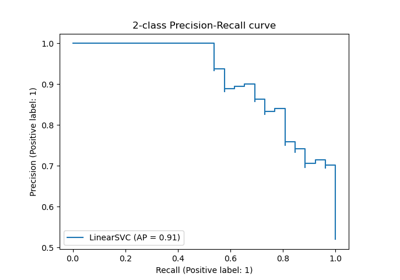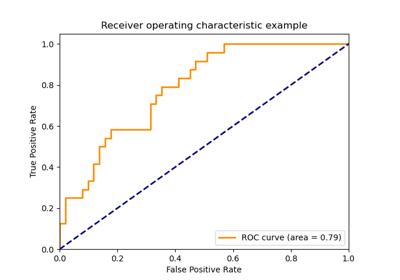sklearn.preprocessing.label_binarize¶
- sklearn.preprocessing.label_binarize(y, *, classes, neg_label=0, pos_label=1, sparse_output=False)[source]¶
Binarize labels in a one-vs-all fashion.
Several regression and binary classification algorithms are available in scikit-learn. A simple way to extend these algorithms to the multi-class classification case is to use the so-called one-vs-all scheme.
This function makes it possible to compute this transformation for a fixed set of class labels known ahead of time.
- Parameters:
- yarray-like
Sequence of integer labels or multilabel data to encode.
- classesarray-like of shape (n_classes,)
Uniquely holds the label for each class.
- neg_labelint, default=0
Value with which negative labels must be encoded.
- pos_labelint, default=1
Value with which positive labels must be encoded.
- sparse_outputbool, default=False,
Set to true if output binary array is desired in CSR sparse format.
- Returns:
- Y{ndarray, sparse matrix} of shape (n_samples, n_classes)
Shape will be (n_samples, 1) for binary problems. Sparse matrix will be of CSR format.
See also
LabelBinarizerClass used to wrap the functionality of label_binarize and allow for fitting to classes independently of the transform operation.
Examples
>>> from sklearn.preprocessing import label_binarize >>> label_binarize([1, 6], classes=[1, 2, 4, 6]) array([[1, 0, 0, 0], [0, 0, 0, 1]])
The class ordering is preserved:
>>> label_binarize([1, 6], classes=[1, 6, 4, 2]) array([[1, 0, 0, 0], [0, 1, 0, 0]])
Binary targets transform to a column vector
>>> label_binarize(['yes', 'no', 'no', 'yes'], classes=['no', 'yes']) array([[1], [0], [0], [1]])


